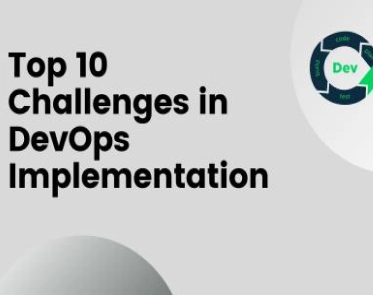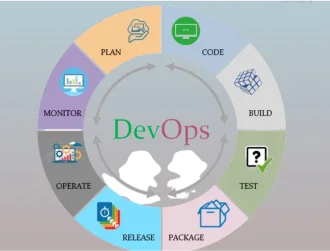In today’s modern era, enterprises need to optimize the application cycle. It helps them keep up with consumer expectations, speed the pace of innovation, and keep business operations agile. Cloud-native application development enables organizations to take advantage of the cloud by delivering faster time to market, improved flexibility, increased scalability, and better consumer experience while reducing cost.
With hybrid app development, developers can promptly augment applications without disrupting functionality or delaying delivery by leveraging independent components, known as microservices, that break down large monolithic apps into smaller ones. However, getting started with cloud-native applications requires a few strategies. In this article, we’ll discuss those strategies, but let’s first learn about enterprise app development.
01Enterprise app development.
Enterprise app development is defined as a complex procedure of creating business applications. These procedures are customized for crucial business requirements. Enterprise applications can be deployed on the cloud on different platforms across the intranet and corporate networks. These applications make employees more productive as they streamline or automate the low-level manual tasks. It will allow your staff to focus on higher value and more fulfilling work.
02Cloud-native enterprise application development.
Cloud-native applications are deployed and hosted in the cloud and are designed to take advantage of the inherent characteristics of the cloud computing software delivery model. A native application is a software developed to be used on a particular platform or device. Native enterprise applications use a microservice architecture. This architecture efficiently allocates resources to all services used by the application, making it adaptable and flexible to a cloud architecture.
03Strategies for application application.
While creating a cloud-native application, developers should follow these strategies.
- Follow the microservices architecture method
Break down your application into microservices allowing automated, incremental, and continuous improvement without causing any downtime.
- Rely on containers for maximum scalability and flexibility
Containers package software with all the dependencies and code in one place, allowing software to run anywhere. It enables maximum portability and flexibility in a hybrid-multi cloud environment. Containers enable fast scaling with the Kubernetes container defined by the user.
- Adopt agile methodology
The agile approach speeds up the creation and optimization process. Developers can instantly iterate updates depending on the user feedback, enabling the working application version to match users’ expectations.
04Best practices to implement cloud-native application development.
Enterprises can reap the full advantage of cloud native application development by implementing the following best practices.
- Achieve workflow and infrastructure automation.
- Segregate monolithic apps into loosely coupled microservices.
- Store infrastructure as a code in an efficient version control system.
- Implement efficient CI/CD pipelines.
- Implement DevOps approaches and processes.
- Challenges with the rapid adoption of cloud-native application development.
Where cloud technology has a lot of benefits, it also comes with some challenges. Here are some of the challenges enterprises can face while rapidly adopting cloud-native application development.
Due to the intense competition and market pressure, enterprises may face significant challenges for adopting new initiatives while achieving greater business velocity.
Most of the open-source technologies are not built to ensure interoperability right from the beginning, and efforts of bringing together various disparate solutions from the cloud-native environment can be complex and full of challenges.
Most open-source technologies don’t have well-defined architecture standards or best practices. Therefore, implementing these solutions and technologies for enterprise application development can be a huge business risk.
These technologies may have a very limited pool of resources, while organizations require the right technical services and support to operate effectively. However, with limited options, the complexities of long-term success can become a huge barrier.
05Conclusion
TCloud-native enterprise application development is important for digital transformation and innovation. Companies adopting cloud-native application development observe a remarkable increase in scalability, productivity, efficiency while improving user experience.








